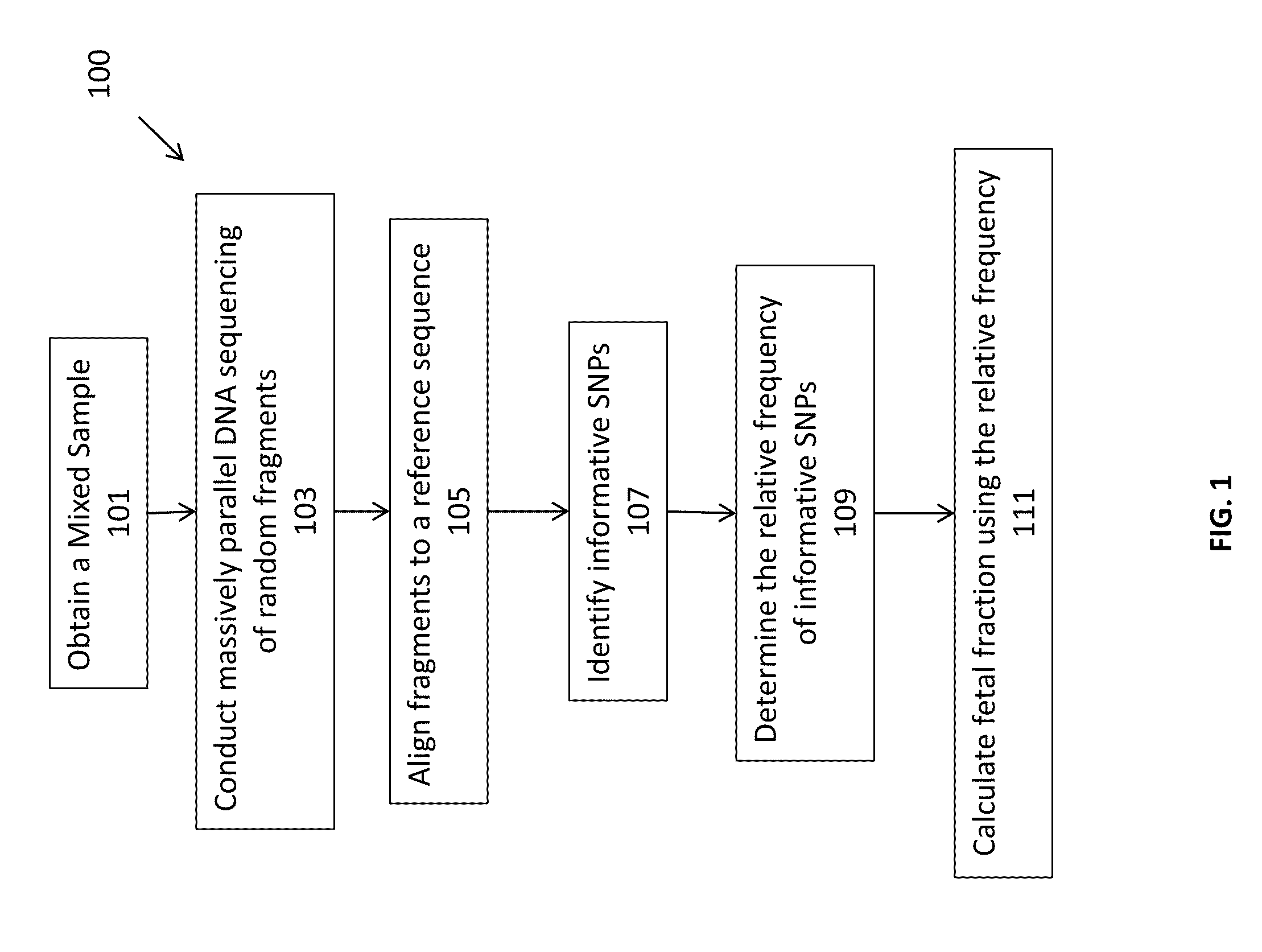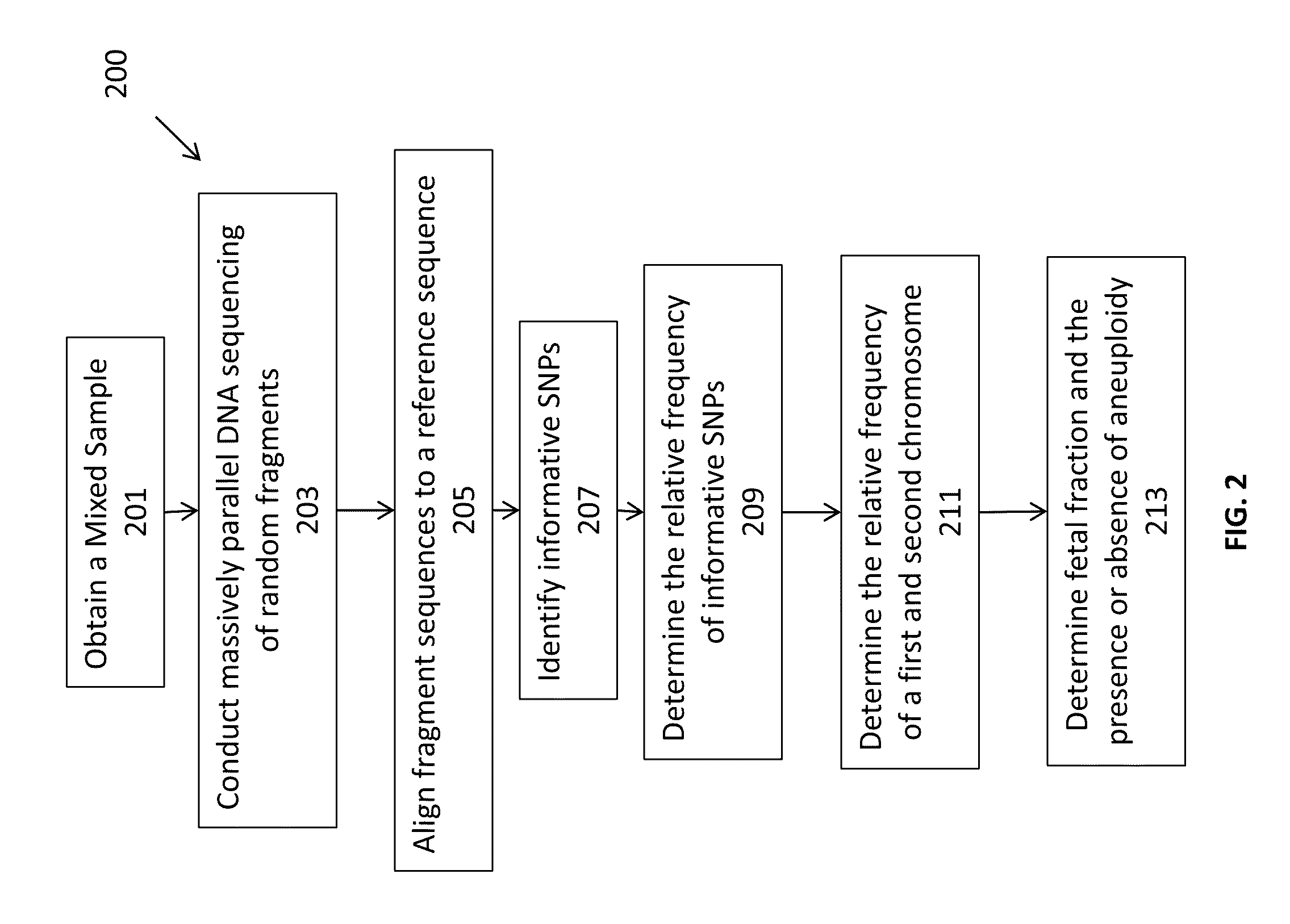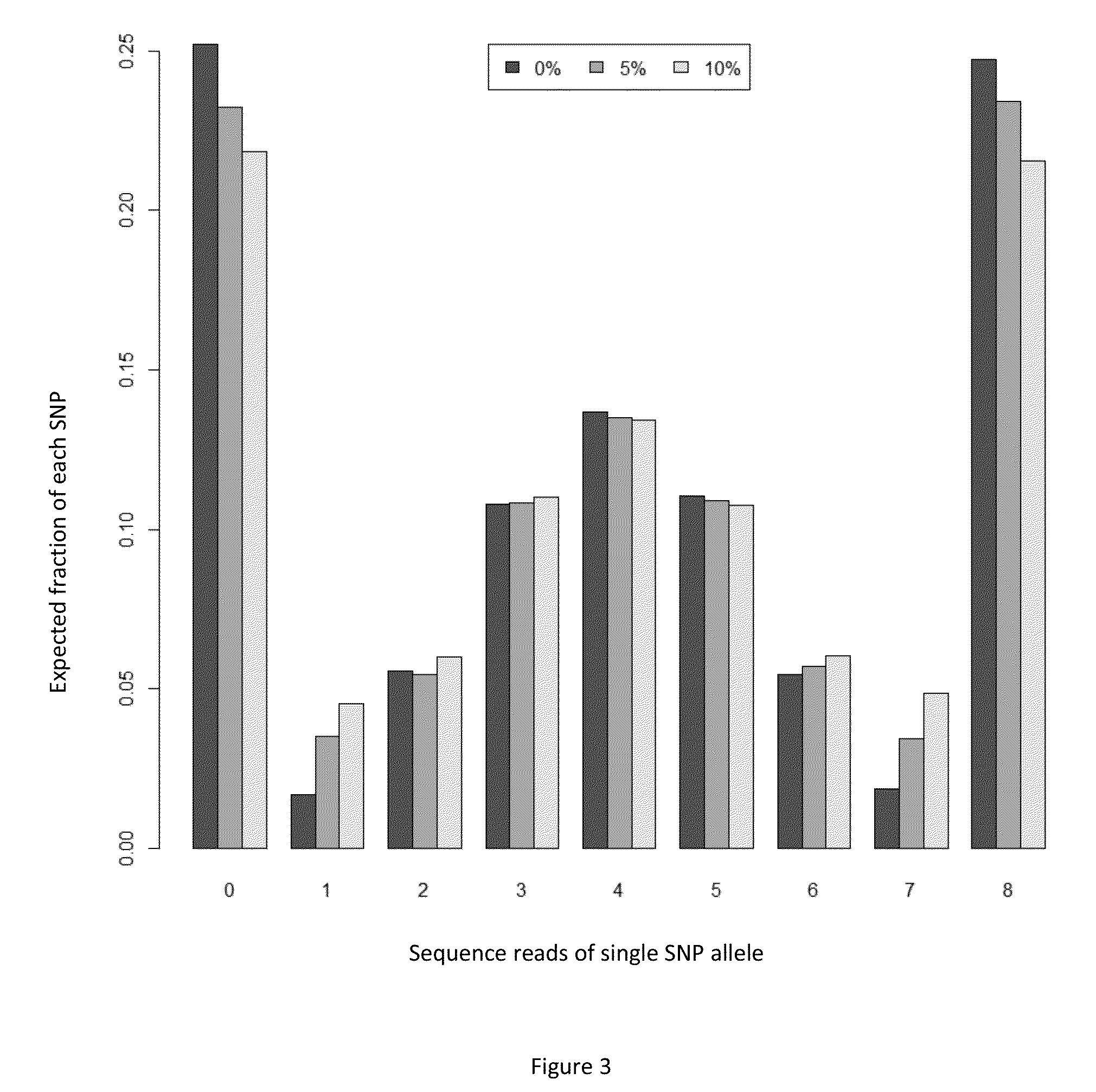Massively parallel sequencing of random DNA fragments for determination of fetal fraction
a fetal fraction and random dna technology, applied in the field of genetic variation and fetal fraction determination, can solve problems such as false positives or false negatives
- Summary
- Abstract
- Description
- Claims
- Application Information
AI Technical Summary
Benefits of technology
Problems solved by technology
Method used
Image
Examples
example 1
Sample Procurement
[0116]Subjects were prospectively enrolled upon providing informed consent, under protocols approved by institutional review boards. Subjects were required to be at least 18 years of age, at least 10 weeks gestational age, and to have singleton pregnancies. A subset of enrolled subjects, consisting of 250 women was selected for inclusion in this study. The subjects were randomized until after analysis.
[0117]8 mL blood per subject was collected into a Cell-free DNA tube (Streck, Omaha, Nebr.) and stored at room temperature for up to 3 days. Plasma was isolated from blood via double centrifugation and stored at −20° C. for up to a year. cfDNA was isolated from plasma using Viral NA DNA purification beads (Life Technologies, Carlsbad, Calif.), biotinylated, immobilized on MyOne C1 streptavidin beads (Life Technologies, Carlsbad, Calif.). The DNA from each sample was prepared for sequencing using a TruSeq™ DNA PCR-Free HT Sample Preparation Kit (Illumina, San Diego Cal...
example 2
Determination of Fetal Fraction in a Maternal Sample Using MPSS
[0118]Massively parallel shotgun sequencing (MPSS) of the prepared DNA obtained as per Example 1 is performed using an Illumina HiSeg™ instrument and the associated reagents. Briefly, the prepared DNA of each sample is run on a single HiSeq lane. 160,000,000 mapped reads are obtained from the sequencing run, each approximately 36 nucleotides (nts) in length. As of dbSNP Build 137, there are more than 50,000,000 reference SNPs in the human genome. Assuming a Poisson distribution of reads across the human genome with a mean of 160,000,000*36 / 3,000,000,000 reads mapping to a genomic position (which has been observed by Fan and Quake, 2010), 40,000 reference SNPs are identified each having at least 8 reads. Although each individual SNP has a small number of reads, having 40,000 or more observations provides enough statistical power to detect distributional differences leading to estimates for fetal fraction.
[0119]For each SN...
example 3
Determination of Fetal Fraction in a Maternal Sample Using MPSS and Informative SNPs
[0122]MPSS of the prepared DNA obtained as per Example 1 is performed using an Illumina MiSeg™ instruments and the associated reagents. Briefly, the prepared DNA of each sample is prepared on a single MiSeq lane. Approximately 18,000,000 mapped reads are obtained from the sequencing run, each approximately 36 nucleotides (nts) in length. Assuming a Poisson distribution of reads across the human genome (which has been observed by Fan and Quake, 2010), fewer than 1 SNP would be expected to have even 6 mapped reads for any given MPSS run.
[0123]To overcome this lack of depth and corresponding lack of statistical power, reads for SNPs can be aggregated together when they are known to be in high linkage disequilibrium, where observing the reads for one SNP are highly predictive of a corresponding read on another SNP. Information regarding SNPs in high linkage disequilibrium are available from the HAPMAP an...
PUM
| Property | Measurement | Unit |
|---|---|---|
| relative frequency | aaaaa | aaaaa |
| length | aaaaa | aaaaa |
| relative frequencies | aaaaa | aaaaa |
Abstract
Description
Claims
Application Information
 Login to View More
Login to View More - R&D
- Intellectual Property
- Life Sciences
- Materials
- Tech Scout
- Unparalleled Data Quality
- Higher Quality Content
- 60% Fewer Hallucinations
Browse by: Latest US Patents, China's latest patents, Technical Efficacy Thesaurus, Application Domain, Technology Topic, Popular Technical Reports.
© 2025 PatSnap. All rights reserved.Legal|Privacy policy|Modern Slavery Act Transparency Statement|Sitemap|About US| Contact US: help@patsnap.com



